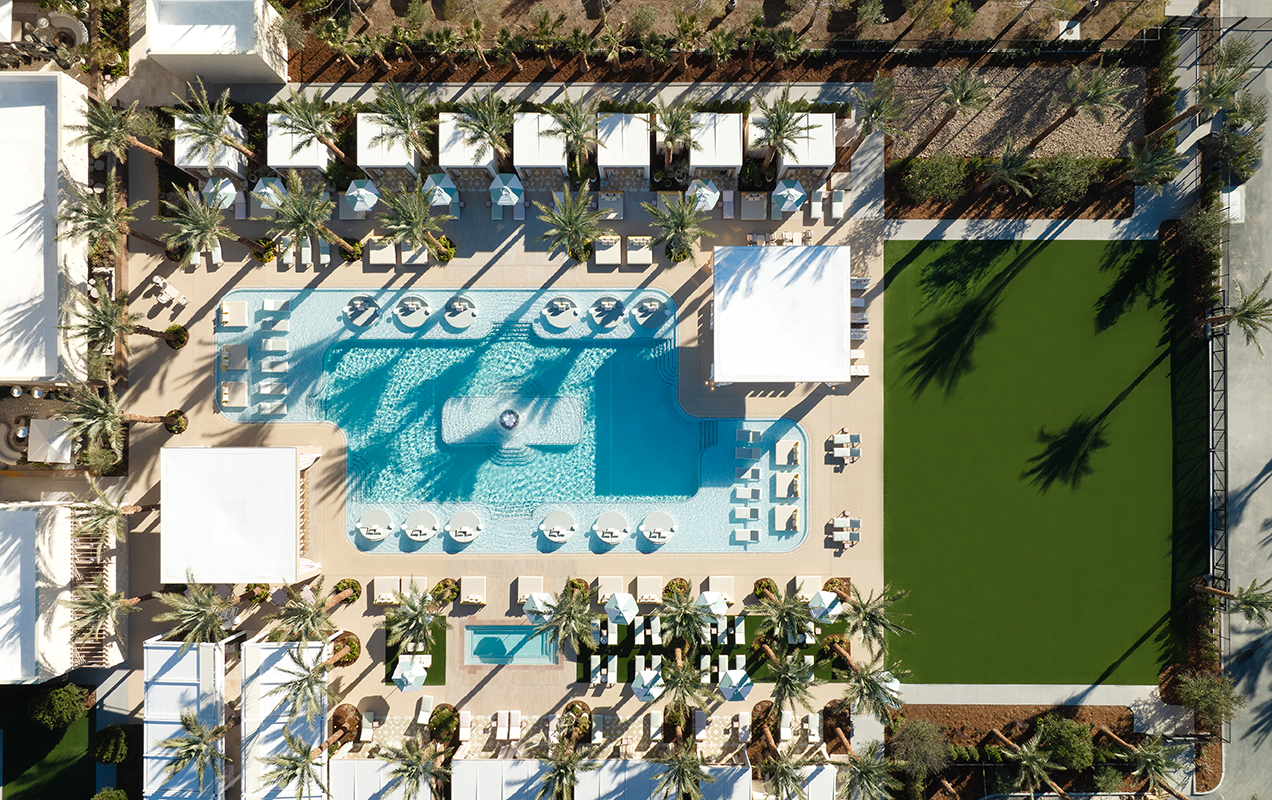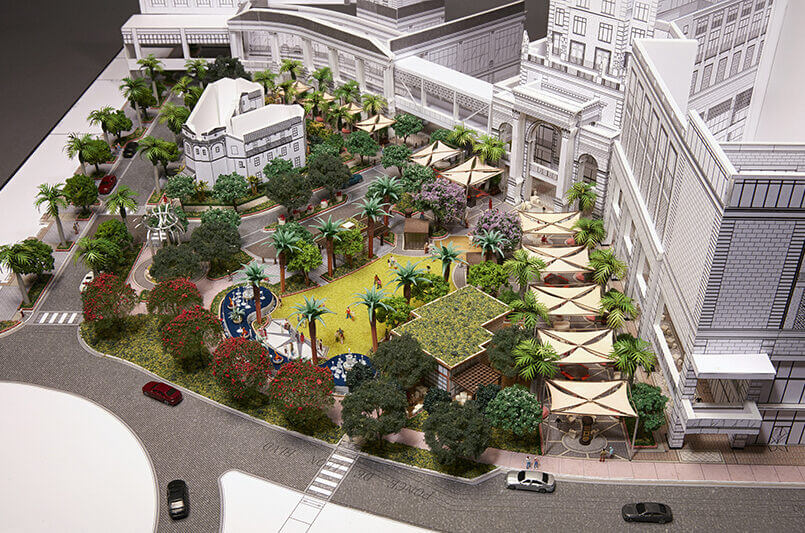
Models are so important . . . to define a space and communicate our vision to clients. Over our long history, we have made physical models to illustrate the design in a practical way. Scale models are an excellent tool to complement more modern, digital renderings because of the ability to walk around them and experience the space. Some projects might need one or both mediums, and we have found it is important to offer these services when the budget allows for them.
Famously, we won The Mirage project because of our founder Don Brinkerhoff’s insistence on building a scale model. Having driven up and down the Strip several times to view the area where the resort would be located, Don noticed a significant bend in Las Vegas Blvd. A two-dimensional plan would not be as effective in illustrating how important it was to sit the dramatic volcano on the curve of the road for best viewing by motorists driving up from the South side of the Strip. He knew he needed to walk Steve Wynn around a three-dimensional model, so he asked for directions to a craft store for supplies, and a space to work for a few hours, then called over some colleagues from Lifescapes to begin building (In the video below, see Don with The Mirage model).
At Don’s induction at the American Gaming Association Hall of Fame, Steve Wynn described the process, “He built the waterfall out of clay and painted the trunks of the trees brown, made coco palms out of green paper. He took wax and made the falling water cascade and the weirs that went towards the front driveway. . . and then Don said, ‘you said you wanted to face the Strip more towards Caesars and The Flamingo, but honestly you’re going to see this from the porte cohere as well, so I added the porte cochere exposure so people waiting for their cars or dropping them off will also experience this from 360 degrees.’” Steve Wynn beamed as he concluded, “I am looking, I swear to you, at what exactly is there today. He did it in 6 hours. The first pass was the last word for the front of Mirage.”
That model gave Steve Wynn the ability to view it from all perspectives, from the vantage point of the guests, and that began a more than 36-year relationship with Wynn Resorts. Because of Steve Wynn’s visual limitations (Legally blind), it was difficult to view 2D plans. So, being able to move around the space, and get down to the street vantage point, as well as from up above made it easier to see scale and depth.
Both 3D and physical models help the client and consultant team understand our landscape design and how it fits into the overall architecture of the project. A physical model makes it easier to make changes with paper and moveable objects, rather than on a completed project made from steel and concrete. The physical models also really help give a strong overview of what the project will feel like, its spaces, and the tree vocabulary.
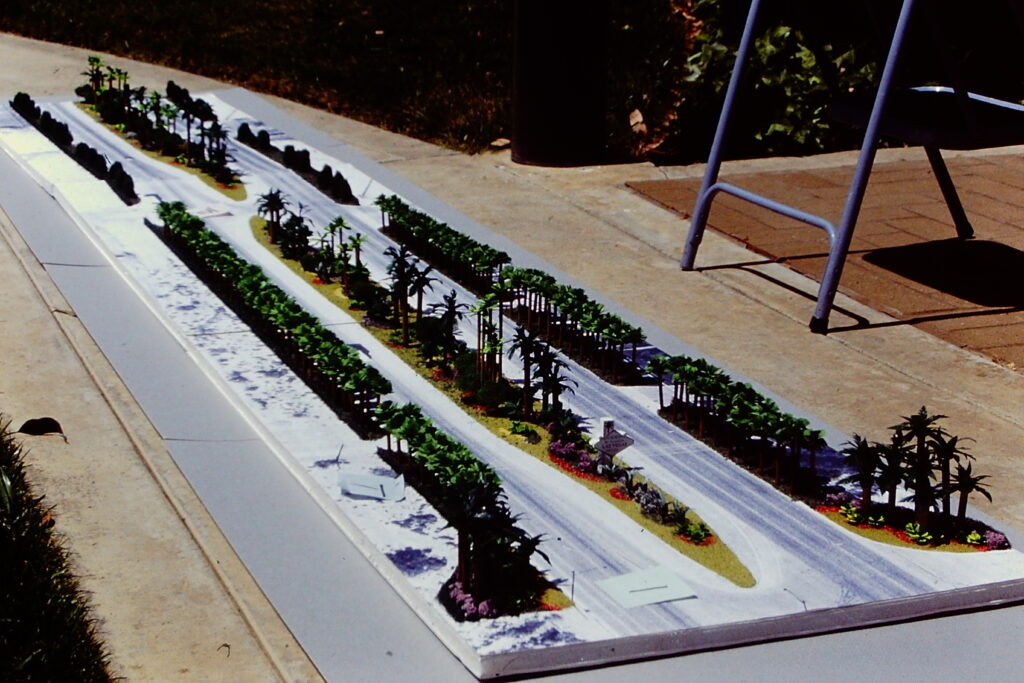
We have used physical models for resorts, hotels, retail projects, and even for the Las Vegas Strip (which was a football field long! See image which captures a small portion of it.). It’s not only a design tool, but it also provides developers a physical product to get “buy in” on a project from their community, because locals can come visualize the beauty of the proposed space.
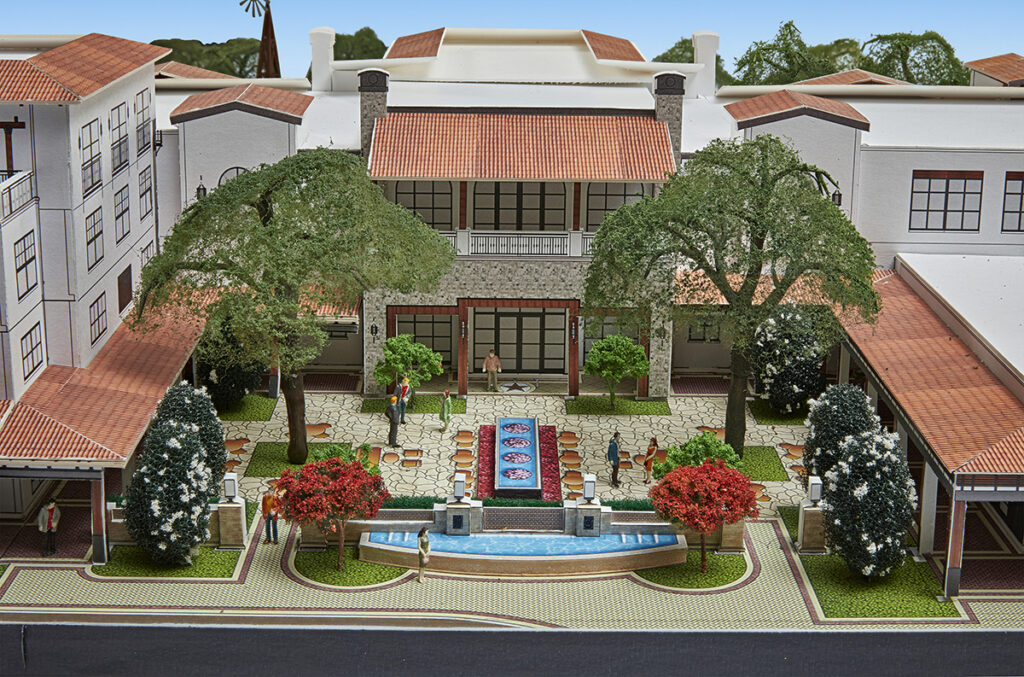
Our physical models range from simple maquettes (essentially tilted up foam core building facades and model trees) to full models that show greater hardscape and softscape detail with three-dimensional buildings. We evaluate which direction to go based on the individual project and need, as sometimes it isn’t important to see all the detail. Maquettes have been useful for some of our retail clients to show their prospective tenants the landscaped spaces and how the planting allows views of their signage. Being able to reposition trees as you like on a model is a real benefit over fixed 3D renderings or fly throughs, which don’t allow the viewer to have any control.
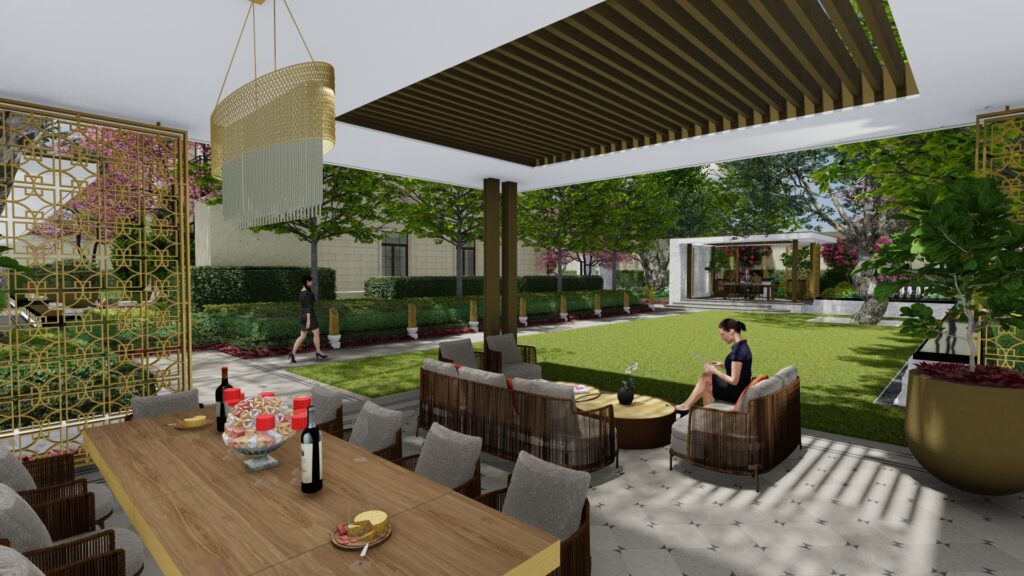 We complement our physical modeling with digital 3D which we do entirely in-house. We create those in our office, rather than farm them out, so that we can be involved in the entire building process. Just like the physical models, we see this as a design tool that we evolve, edit, and change as we go. From there, we can build the 3D rendering to a level that meets the client’s needs, be it for team coordination or to use directly in marketing that goes out to the public or potential investors.
We complement our physical modeling with digital 3D which we do entirely in-house. We create those in our office, rather than farm them out, so that we can be involved in the entire building process. Just like the physical models, we see this as a design tool that we evolve, edit, and change as we go. From there, we can build the 3D rendering to a level that meets the client’s needs, be it for team coordination or to use directly in marketing that goes out to the public or potential investors.
Once we have built an area in 3D, which we like to call building out the “world,” it allows us to take fixed views (photos) of wherever we think we need to see and from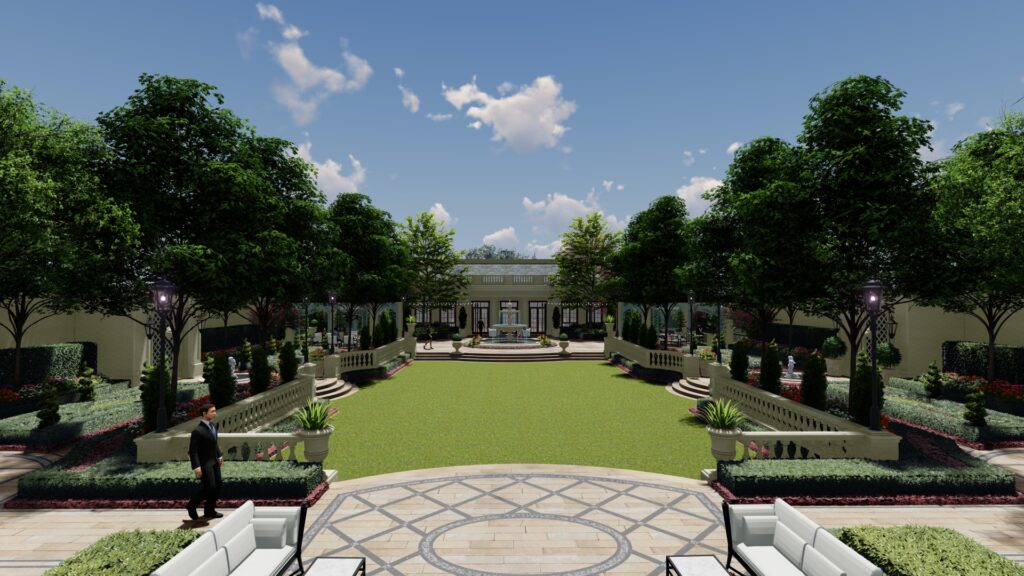 any vantage point. That way, we can quickly address any questions a developer or consultant might have, as well as the ability to offer up optional solutions. And if it helps to understand how it feels to move through the space, we can create fly throughs that take all viewers on a journey.
any vantage point. That way, we can quickly address any questions a developer or consultant might have, as well as the ability to offer up optional solutions. And if it helps to understand how it feels to move through the space, we can create fly throughs that take all viewers on a journey.
Either way, models are an effective tool to deliver our vision to the client, in a way that represents what the guests will ultimately experience. They are a great tool to communicate a set of ideas, in full color, allowing clients the ability to “walk through” the space, whether that’s in a physical form, or on-screen in a 3D world that can be moved around to show different perspectives. They are extremely realistic and help streamline the approval process, as well as illustrate concepts to communities, tenants and ownership.
In a future blog, we’ll take you inside our model-making process to see how the magic is made….


